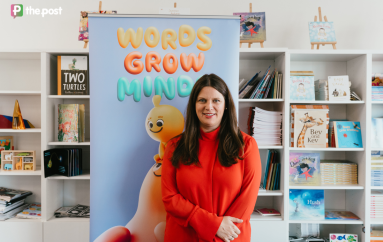
Ideas for Australia: Rethinking funding and priorities in IVF
How much should the state spend on helping people to have children?

File photo: Shutterstock
At present, government support for infertility treatment is approximately A$240 million a year. The success of fertility treatments such as IVF is good if you are under 35 years of age, but once a woman hits 40 it plummets, falling to an almost futile one-in-80 chance of producing a baby for women 45 years and older. This raises the question – is IVF a cost-effective use of taxpayers’ money? And what about for older women?
Decisions about funding are usually made on grounds of cost-effectiveness. In Australia, the cost-effectiveness threshold is about A$40,000 per “QALY”. A QALY is a quality adjusted life year. Thus the government will spend, for example, A$40,000 to add a year of full health, or improve the quality of life by 10% for 10 years.
Is IVF cost-effective? It depends on how we measure it.
The life of the child
If we count the life of the child who is produced by reproduction as a benefit, then IVF for infertility is highly cost-effective. Latest figures state that more than 13,000 babies were born through IVF treatment, at an average cost to government of A$19,000 per child.
Likewise pre-implantation genetic diagnosis to test for genetic disorders in potentially fertile couples is cost-effective. Genetic testing costs on average A$3,000-$5,000 per cycle of IVF, plus the additional IVF treatment costs. Even for a 45-year-old woman, at A$5,000 per cycle, total cost to bring about a live birth would be A$400,000. But this buys a whole life of 80 QALYs, so works out to be A$5,000 per QALY, well below the threshold and great value for money.
While the Australian government does pick up the tab for the majority of IVF costs, it pays absolutely nothing towards the costs of genetic testing, which are borne by the prospective parents. This appears to be a strange position when one considers the costs associated with care for a child born with cystic fibrosis, estimated to be over A$30,000 a year.
Let’s say the person with cystic fibrosis lives 30 years. This gives a total cost of nearly A$1 million for lifetime care. Genetic testing costs maximum about A$5,000 and IVF about A$19,000. That is A$1 million versus A$24,000.
It is thus vastly more cost-effective to provide genetic testing for free and have children born without cystic fibrosis. It could be that fears of “designer babies” are holding back improving access to this life-saving and economically sound medical care.

Fear of ‘designer babies’ where parents pick hair and eye colour clouds the fact that we could also pick babies without disease. From www.shutterstock.com
If we count the value of the life of a child produced by IVF as a benefit, it is a hugely cost-effective medical procedure.
The life of the parents
There is great philosophical debate about how to value bringing new people into existence. For example, it is much worse to kill someone than to decide not to have a child (using contraception or abstinence). Killing someone harms them but failing to bring someone into existence harms no one. Likewise, it is often said that bringing someone into existence does not directly benefit any individual.
For this reason, it can be argued that the relevant harms and benefits are those to the parents. That is, the success of IVF should not be counted in terms of the life of the child produced but in terms of the unhappiness, anxiety and other mental distress couples or individuals feel at not being able to have a child. This makes IVF much less cost-effective because the benefits are so much smaller.
Impersonal reasons
Should the life of the child count in us deciding how to fund and prioritise IVF? We think it should, but in a way that is different to counting its full value. Consider the simple case of genetic selection to avoid a genetic disease such as cystic fibrosis.
If IVF and genetic testing are used to select a healthy embryo, call her Jane, we avoid hundreds of thousands of dollars in lifetime health-care costs and all the difficulty and misery of a life with cystic fibrosis. But did the genetic selection benefit Jane? No – if it were not performed, another child, call him Peter, would have been born with cystic fibrosis.
This is puzzling. We want to say it is good that people don’t have genetic diseases in the future, but when this is achieved by genetic selection it does not appear to benefit anyone. Of course parents and society benefit by not having to care and worry about treatment for cystic fibrosis. But we also feel intuitively that a world without cystic fibrosis is a better world.
Sometimes these reasons are called “impersonal reasons”, reasons that are unconnected to harm and benefit to persons. These reasons give us some cause to act. But they appear weaker than ordinary person-affecting reasons, which involve direct harm and benefit to persons. For example, it is worse to give someone cystic fibrosis who was previously healthy than it is to fail to have genetic selection and so conceive a child with cystic fibrosis.
Nonetheless, impersonal reasons to care about the next generation are an important ground for making the world a better place – for example, by selecting policies aimed at reducing carbon emissions. Such policies will inevitably affect the timing of reproduction, and so the identity of who is born. Nonetheless the world is better for these different future people.
The implication of this for IVF and genetic selection is that we have some direct impersonal reasons to support these. These arguments extend to having children. It is better if there are children in the future.
Many European and Asian countries are suffering from having too few young people to support their ageing populations. Of course the limitation of resources places an upper limit on how many people there should be. But in the absence of such a limit, it is better if there are more happy, healthy people.

Having more children in the world is better – whether their creation was assisted or not. From www.shutterstock.com
These arguments suggest much more funding should be put into IVF and genetic selection to avoid serious disease. But they also extend to other non-disease traits. It is better if people have talents and gifts, are happy, co-operative, empathetic, altruistic and so on.
What goes on the list of personally and socially valuable traits is contentious, but there is consensus on some traits. Psychopathy is not a trait there is a reason to preserve, or to select for. We should support selecting against it, just as we should support preventing disease.
Genetic selection should be supported to have children who will have better lives, not merely healthier lives. It ought to be a priority.
Now that whole genome analysis is becoming cheap and widely available, it ought to be employed where IVF is already being used for infertility or avoiding genetic disease. But should we lift laws that prevent access to IVF for healthy couples?
Should the state support genetic selection where there is not a high risk of genetic disease or infertility? The answer to this question will depend on just how much genetic selection is capable of adding to the quality of the lives of the next generation or the benefits to future society.
At present, most complex traits like intelligence have many genes contributing. When only 20 embryos are produced, it is not possible to select across a large number of genes. For this reason, genetic selection is unlikely to be cost-effective when dealing with polygenic traits.
Nonetheless, laws banning such genetic selection ought to be lifted. And if technologies that amplify genetic selection for polygenic traits become available, perhaps the state ought to provide these.
Including the value of new people in our moral and economic thinking would cause us in many cases to give greater economic support to IVF and genetic selection than we currently do.
![]() Julian Savulescu, Sir Louis Matheson Distinguishing Visiting Professor at Monash University, Uehiro Professor of Practical Ethics, University of Oxford and Kelton Tremellen, Strategic Professor in Reproductive Medicine, Flinders University
Julian Savulescu, Sir Louis Matheson Distinguishing Visiting Professor at Monash University, Uehiro Professor of Practical Ethics, University of Oxford and Kelton Tremellen, Strategic Professor in Reproductive Medicine, Flinders University
This article was originally published on The Conversation. Read the original article.
It is part of a series of articles on “Ideas for Australia”: read the other stories here.




